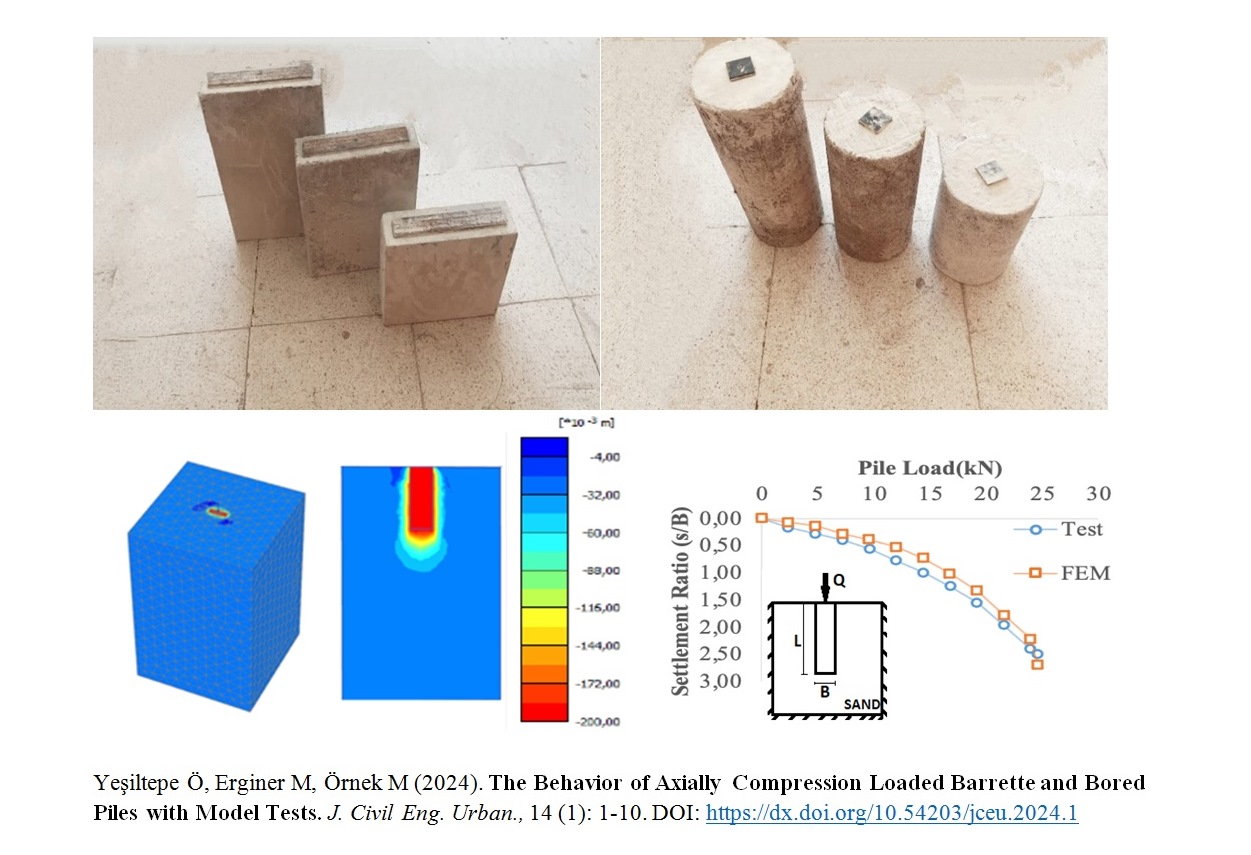<Previous issue | Next issue> | Archive
Volume 14 (1); March 25, 2024
The Behavior of Axially Compression Loaded Barrette and Bored Piles with Model Tests
Yeşiltepe Ö, Erginer M, Örnek M.
J. Civil Eng. Urban., 14(1): 1-10, 2024; pii:S225204302400001-14
DOI: https://dx.doi.org/10.54203/jceu.2024.1
Abstract
Deep foundations could be preferred instead of shallow foundations in the event that the loads coming from the structure are excessive and the soil state is inconvenient. Rectangular shaped barrette piles are the one of them. In this study, firstly a series of laboratory tests have been conducted using three different sizes of barrette and bored piles placed in the sand soil. Then, finite element based three-dimensional back analyses have been performed using the data obtained from these tests. Afterwards; a series of parametric analyses were performed with different pile geometries, including real pile dimension used in current geotechnical applications. As seen that bored piles are exposed to displacement approximately 2 times more than barrette piles under the same force at all pile lengths. When the pile lengths used in real geotechnical applications are also investigated, it has been determined that bored piles have displacements between 1.5 and 2.3 times more than barrette piles. Numerical results with the piles of small cross-section area show that barrette piles have more bearing capacity compared with bored piles. As the pile length increases, barrette piles could be more loads from 2% up to 17%. When the piles in real geotechnical dimensions are examined, barrette piles have revealed more bearing capacity performance from 7% to 49% when compared to bored piles as the pile length increases. It also has been revealed that barrette piles show better performance than bored piles both in experimental and numerical analyses.
Keywords: Barrette pile, bored pile, sand, model test, numerical analysis
[Full text-PDF] [Crossref Metadata] [Export from ePrints]
<Previous issue | Next issue> | Archive
This work is licensed under a Creative Commons Attribution 4.0 International License (CC BY 4.0)![]()

